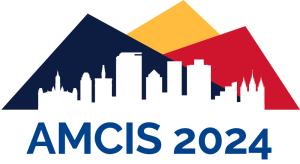Loading...
Paper Type
Complete
Abstract
Super apps are a recent phenomenon primarily inspired by Chinese apps – open platforms where partners can create mini-applications and make them available to users. Although this is a widely disseminated phenomenon, we observed a lack of harmonization regarding its concept. Therefore, this paper aims to present a definition for super apps and analyze how this definition consolidates the perspective oriented towards digital ecosystems. We conducted a systematic literature review, analyzing 26 journal papers from 2018 to 2023. Following the analysis, we achieved a harmonized concept of super apps. Furthermore, we have observed that the concept is divided into two specific branches, characterized by their geographical origin and how these apps materialize digital ecosystems. These branches support the perspective of DeSanctis and Poole (1994) and Schmitz et al. (2016) regarding the variability in technology appropriation processes, based on the social context in which these artifacts are developed.
Paper Number
1360
Recommended Citation
Lucas Júnior, Durval and Lopes, Evandro, "Defining a Super App and Analyzing It from an Ecosystemic Perspective" (2024). AMCIS 2024 Proceedings. 7.
https://aisel.aisnet.org/amcis2024/adoptdiff/adoptdiff/7
Defining a Super App and Analyzing It from an Ecosystemic Perspective
Super apps are a recent phenomenon primarily inspired by Chinese apps – open platforms where partners can create mini-applications and make them available to users. Although this is a widely disseminated phenomenon, we observed a lack of harmonization regarding its concept. Therefore, this paper aims to present a definition for super apps and analyze how this definition consolidates the perspective oriented towards digital ecosystems. We conducted a systematic literature review, analyzing 26 journal papers from 2018 to 2023. Following the analysis, we achieved a harmonized concept of super apps. Furthermore, we have observed that the concept is divided into two specific branches, characterized by their geographical origin and how these apps materialize digital ecosystems. These branches support the perspective of DeSanctis and Poole (1994) and Schmitz et al. (2016) regarding the variability in technology appropriation processes, based on the social context in which these artifacts are developed.
When commenting on articles, please be friendly, welcoming, respectful and abide by the AIS eLibrary Discussion Thread Code of Conduct posted here.



Comments
SIGADIT